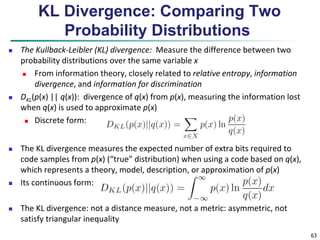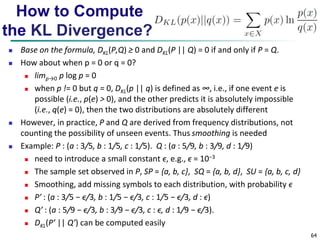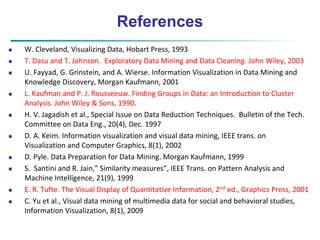Chapter 2 of 'Data Mining: Concepts and Techniques' covers fundamental aspects of data, including data objects, attribute types, statistical descriptions, and data visualization. It explains various types of data sets, characteristics of structured data, and different attribute types while discussing measures of central tendency and dispersion. Additionally, it explores data visualization methods to aid in understanding complex data structures and relationships.




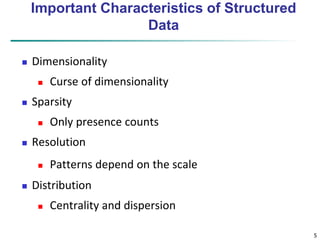



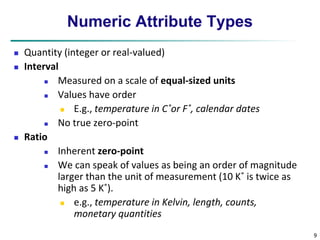
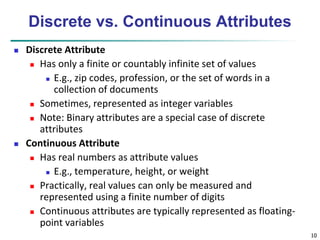

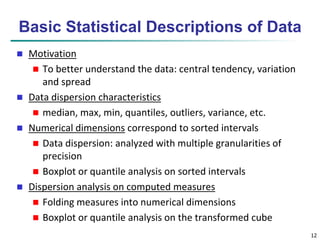
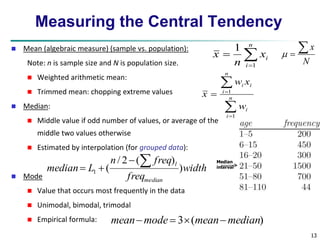

![15
Measuring the Dispersion of Data
Quartiles, outliers and boxplots
Quartiles: Q1 (25th percentile), Q3 (75th percentile)
Inter-quartile range: IQR = Q3 –Q1
Five number summary: min, Q1, median,Q3, max
Boxplot: ends of the box are the quartiles; median is marked; add whiskers,
and plot outliers individually
Outlier: usually, a value higher/lower than 1.5 x IQR
Variance and standard deviation (sample: s, population: σ)
Variance: (algebraic, scalable computation)
2 2
2 2 ( ) ]
i i
2 2 1
Standard deviation s (or σ) is the square root of variance s2 (or σ2)
n
i
n
i
n
i
i x
n
x
n
x x
n
s
1 1
1
1
[
1
1
( )
1
1
n
i
i
n
i
i x
N
x
N 1
2 2
1
( )
1
](https://image.slidesharecdn.com/02data-140913212224-phpapp01/85/Data-mining-Concepts-and-Techniques-Chapter-2-data-15-320.jpg)

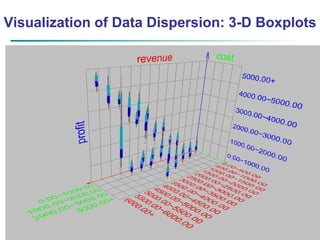







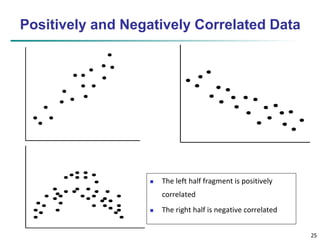

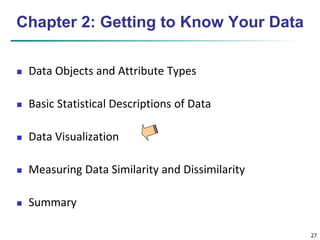
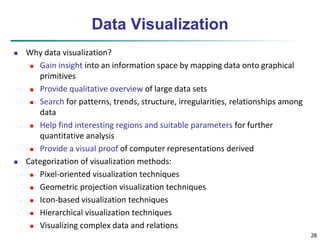

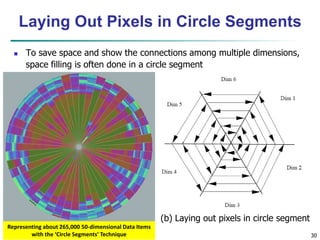
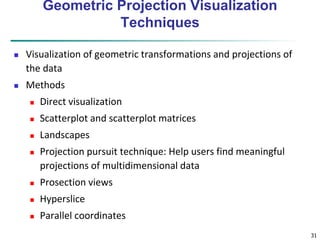

![33
Scatterplot Matrices
Used by ermission of M. Ward, Worcester Polytechnic Institute
Matrix of scatterplots (x-y-diagrams) of the k-dim. data [total of (k2/2-k) scatterplots]](https://image.slidesharecdn.com/02data-140913212224-phpapp01/85/Data-mining-Concepts-and-Techniques-Chapter-2-data-33-320.jpg)

![35
Parallel Coordinates
n equidistant axes which are parallel to one of the screen axes and
The axes are scaled to the [minimum, maximum]: range of the
Every data item corresponds to a polygonal line which intersects each of the
axes at the point which corresponds to the value for the attribute
• • •
correspond to the attributes
corresponding attribute
Attr. 1 Attr . 2 Attr. 3 Attr. k](https://image.slidesharecdn.com/02data-140913212224-phpapp01/85/Data-mining-Concepts-and-Techniques-Chapter-2-data-35-320.jpg)

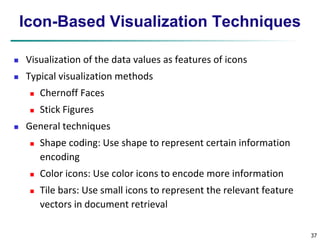

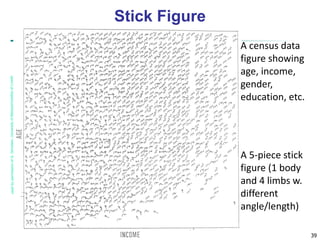


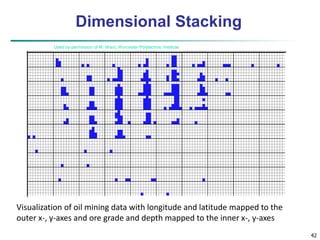
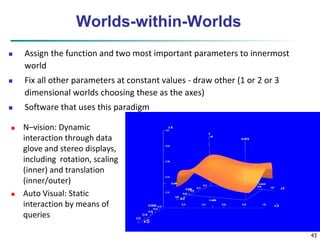


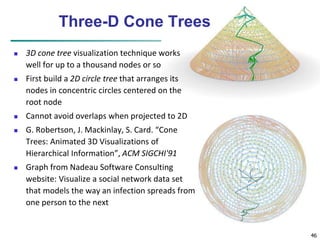
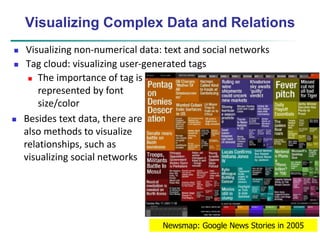

![49
Similarity and Dissimilarity
Similarity
Numerical measure of how alike two data objects are
Value is higher when objects are more alike
Often falls in the range [0,1]
Dissimilarity (e.g., distance)
Numerical measure of how different two data objects are
Lower when objects are more alike
Minimum dissimilarity is often 0
Upper limit varies
Proximity refers to a similarity or dissimilarity](https://image.slidesharecdn.com/02data-140913212224-phpapp01/85/Data-mining-Concepts-and-Techniques-Chapter-2-data-49-320.jpg)

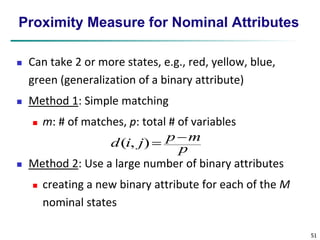
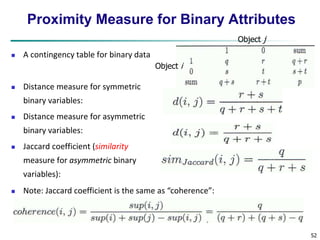


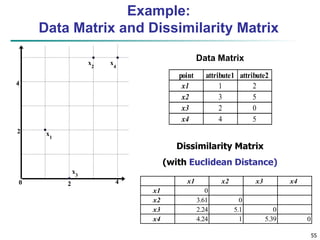



![59
Ordinal Variables
An ordinal variable can be discrete or continuous
Order is important, e.g., rank
Can be treated like interval-scaled
replace xif by their rank
{1,..., } if f r M
map the range of each variable onto [0, 1] by replacing i-th
object in the f-th variable by
1
1
f
r
if
z
if M
compute the dissimilarity using methods for interval-scaled
variables](https://image.slidesharecdn.com/02data-140913212224-phpapp01/85/Data-mining-Concepts-and-Techniques-Chapter-2-data-59-320.jpg)



